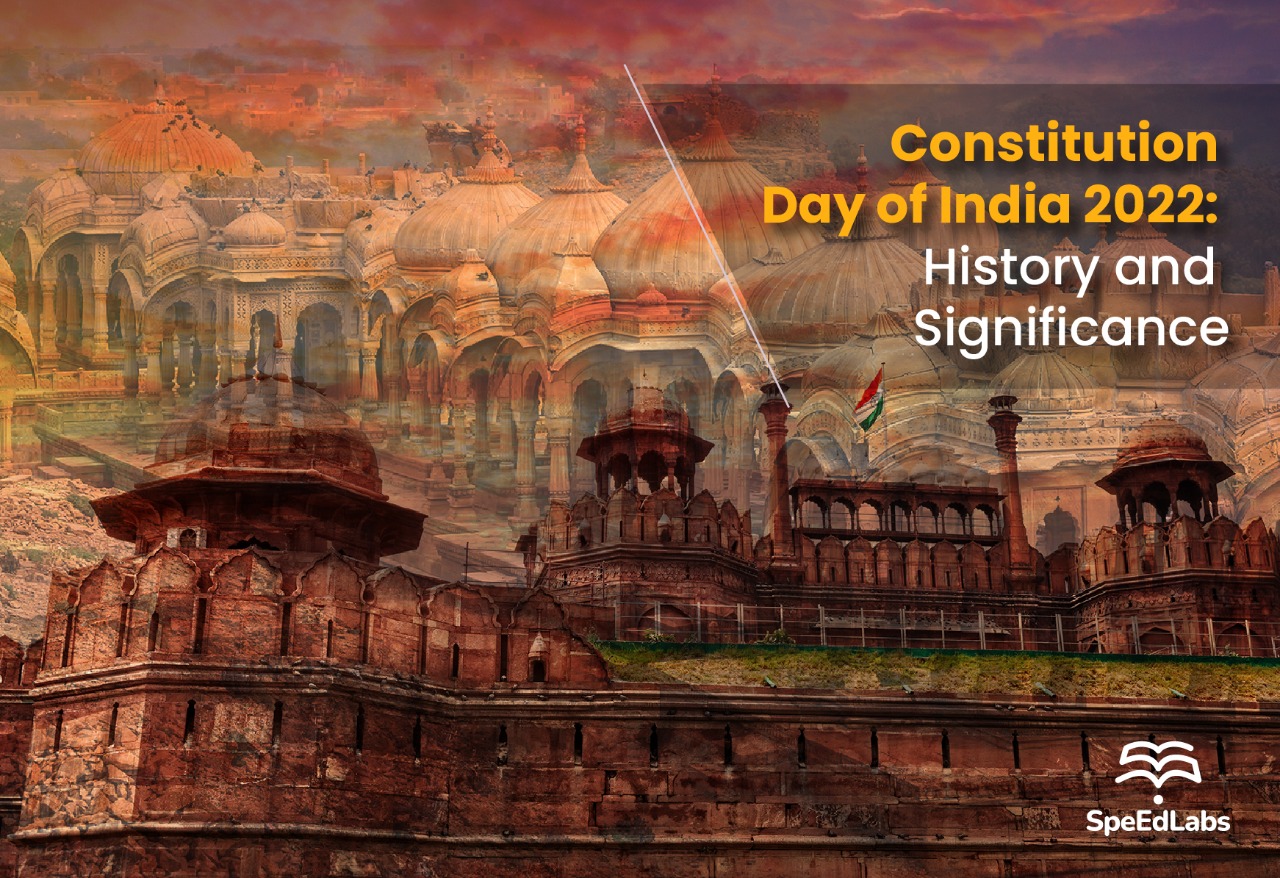Constitution Day 2022: It commemorates the adoption of the Indian Constitution on November 26 and is also known as ‘Samvidhan Divas’. Let’s read more about this day in detail.
Constitution Day of India 2022: Every year, on November 26th, India celebrates Constitution Day, also known as Samvidhan Divas, to commemorate the adoption of the Indian Constitution. On November 26, 1949, the Constituent Assembly enacted the Constitution of India, and it became effective on January 26, 1950. As noted by American historian Granville Seward Austin, the B. R. Ambedkar-drafted Constitution was first and foremost a social document.
In the past, Constitution Day was celebrated as Law Day, which is also known as Samvidhan Diwas. According to some sources, India’s constitution is the longest written constitution in any country in the world. The main goal is to enhance awareness of Fundamental Duties through creation and maintenance of awareness. 26th November 2022 will mark the 73rd anniversary of the adoption of the Indian Constitution.
Constitution Day 2022: History
In 1946, the Indian Constitution was drafted by the Constituent Assembly established under the Cabinet Mission Plan. The Assembly convened for the first time on December 9, 1946, electing Dr. Sachhidanand Sinha as its provisional president. On December 11, 1946, the Assembly elected Dr. Rajendra Prasad as its permanent chairman.
To draft the constitution, the Constituent Assembly established 13 committees led by Dr. B.R. Ambedkar. The Constitution was drafted by a seven-member Drafting Committee based on the reports of these committees.
The people of India are the primary guardians of the Constitution. Their sovereignty is recognized by the Constitution, which was ratified in their honour. It is the Constitution that gives the citizen power, but it is also the citizen who gives the Constitution power by upholding, protecting and enhancing it. There is no one who owns the Constitution, it belongs to everyone.
Despite having a Part III for fundamental rights, the Constitution did not include any provisions regarding citizens’ fundamental duties. In 1976, the 42nd Amendment to the Constitution was passed, adding the Fundamental Duties of Citizens to it based on recommendations made by the Swaran Singh Committee. According to the Committee, action should be taken to ensure that the person did not neglect his responsibilities while exercising his fundamental rights.
A citizen’s fundamental duties serve as a constant reminder that while the constitution explicitly grants them certain Fundamental Rights, it also demands that citizens follow certain basic norms of democratic behavior and conduct because rights and duties are interrelated.
Samvidhan Divas 2022
The Constituent Assembly drafted the Indian Constitution. There were a total of 13 committees appointed by the Constituent Assembly to deal with different constitutional tasks. Among the committees, there were 8 major ones and the rest were minor ones.
Listed below are the major committees and their heads:
- Drafting Committee – B. R. Ambedkar
- Union Power Committee – Jawaharlal Nehru
- Union Constitution Committee – Jawaharlal Nehru
- Provincial Constitution Committee – Vallabhbhai Patel
- Advisory Committee on Fundamental Rights, Minorities and Tribal and Excluded Areas – Vallabhbhai Patel.
- Rules of Procedure Committee – Rajendra Prasad
- States Committee (Committee for Negotiating with States) – Jawaharlal Nehru
- Steering Committee – Rajendra Prasad
Law Day 2022
Law day was first observed in 1979. Under the leadership of Dr. L.M Singhvi, the Supreme Court Bar Association decided to observe 26th November as Law Day.
Law day is observed for the following reasons:
- To assess the law and justice of the country
- To establish a healthy relationship between the Bar Association and the Bench
- To strengthen the judiciary system and its independence.
- To celebrate the freedom of the legal profession
- To make and law and Judicial system, the valuable sources of reliance for the people
- To establish the confidence of people in the judicial system.
- To prevent any sort of injustice within the judicial system
It is a way to ensure that democracy is supervised by a code of laws.
Constitution Day 2022: Significance
2015 marked the 125th birthday of Babasaheb Bhimrao Ambedkar, Chairman of the Drafting Committee for the Constitution. The Ministry of Social Justice and Empowerment of the Central government announced publicly on November 19, 2015, that every year, November 26 will be observed as Constitution Day.
Preamble to the Constitution of India
“WE, THE PEOPLE OF INDIA, having solemnly resolved to constitute India into a SOVEREIGN SOCIALIST SECULAR DEMOCRATIC REPUBLIC and to secure to all its citizens:
JUSTICE, social, economic, and political;
LIBERTY of thought, expression, belief, faith, and worship;
EQUALITY of status and of opportunity;
and to promote among them all
FRATERNITY assuring the dignity of the individual and the unity and integrity of the Nation;
IN OUR CONSTITUENT ASSEMBLY this twenty-sixth day of November, 1949, do HEREBY ADOPT, ENACT AND GIVE TO OURSELVES THIS CONSTITUTION.”
The Constitution of India declares India a sovereign, socialist, secular, democratic republic, assuring its citizen’s justice, equality, and liberty and endeavours to promote fraternity. The preamble was amended by the 42nd Constitutional Amendment Act in 1976, in which three new words Socialist, Secular, and Integrity were added.
Constitution Day 2022: Facts
- A total of 2 years, 11 months, and 17 days were spent framing the Constitution.
- When the constitution was finally adopted in 1949, 284 members of the Constituent Assembly signed it, including 15 women.
- Rajendra Prasad served as the chairman of the Constituent Assembly.
Also published on Medium.
